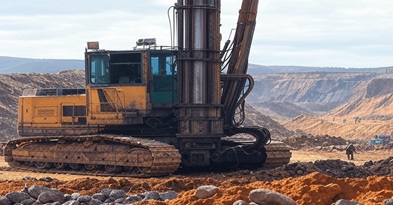
Sustainable Mining: The Future of Responsible Resource Extraction
Mining plays a vital role in global economic development, providing essential raw materials for industries such as construction, manufacturing, and energy production. However, traditional mining practices often raise concerns about environmental degradation, resource depletion, and community displacement. Sustainable mining aims to balance resource extraction with environmental conservation, ethical labor practices, and long-term economic benefits.
At MBL Multifunctional Group Ltd, we are committed to responsible mining operations that ensure efficiency, sustainability, and positive community impact. In this blog, we explore five key strategies for sustainable mining practices.
1. Eco-Friendly Mining Techniques
Minimizing environmental impact is at the core of sustainable mining. Adopting innovative and less invasive extraction techniques helps preserve ecosystems while maintaining productivity.Key Sustainable Mining Methods:
- Low-Impact Surface Mining: Reducing land disruption and habitat destruction.
- Hydraulic Mining Alternatives: Using eco-friendly water management strategies.
- Bioleaching & Phytomining: Employing bacteria and plants to extract minerals without harmful chemicals.
- Precision Drilling & Blasting: Enhancing efficiency while minimizing waste and environmental impact. These methods ensure that mining activities are carried out responsibly, reducing long-term ecological damage.
2. Renewable Energy & Energy Efficiency in Mining
Mining operations are traditionally energy-intensive. Implementing renewable energy sources and improving energy efficiency can significantly reduce carbon footprints and operational costs.Sustainable Energy Solutions in Mining:
- Solar & Wind Power Integration: Utilizing renewable energy to power mining sites.
- Energy-Efficient Equipment: Using advanced machinery to optimize fuel consumption.
- Hybrid Power Systems: Combining renewable and conventional energy for stable power supply.
- Carbon Capture Technologies: Reducing greenhouse gas emissions from mining operations. Transitioning to greener energy solutions not only lowers operational costs but also enhances the sustainability of mining projects.
3. Water Management & Waste Reduction
Mining operations often consume large amounts of water and generate significant waste. Sustainable water management and waste reduction strategies are essential for responsible mining.Key Water Conservation Techniques:
- Closed-Loop Water Recycling Systems: Reusing water in mining processes to minimize wastage.
- Rainwater Harvesting: Collecting and utilizing rainwater to supplement water needs.
- Wastewater Treatment & Reuse: Treating and repurposing water for dust suppression and industrial use.
- Efficient Tailings Management: Implementing tailings dams and dry stacking to reduce water contamination.
Sustainable Waste Management Approaches:
- Recycling Mine Waste: Reusing extracted materials for construction and other industries.
- Zero-Waste Mining Initiatives: Reducing waste through material recovery and circular economy principles.
- Bioremediation: Using natural methods to restore land affected by mining activities. These initiatives help conserve water resources and minimize the ecological footprint of mining operations.
4. Community Engagement & Ethical Mining Practices
Sustainable mining goes beyond environmental conservation—it also involves creating positive social impacts and ensuring ethical labor practices.Key Community & Ethical Mining Strategies:
- Local Employment & Skills Development: Providing jobs and training programs for local communities.
- Fair Labor Practices & Safety Standards: Ensuring safe working conditions and fair wages for miners.
- Community Development Projects: Investing in healthcare, education, and infrastructure in mining regions.
- Transparent Operations & Stakeholder Engagement: Collaborating with governments, NGOs, and communities to ensure responsible mining. By prioritizing social responsibility, mining companies can build long-term partnerships with local communities and stakeholders.
5. Land Rehabilitation & Post-Mining Restoration
After mining activities conclude, land rehabilitation and environmental restoration are critical for mitigating long-term damage.Effective Land Rehabilitation Techniques:
- Reforestation & Afforestation: Planting trees and vegetation to restore ecosystems.
- Topsoil Replacement & Soil Remediation: Enhancing soil quality for agricultural and ecological restoration.
- Mine Pit Repurposing: Converting former mining sites into recreational parks, lakes, or solar farms.
- Wildlife Conservation Programs: Protecting and restoring habitats affected by mining.
